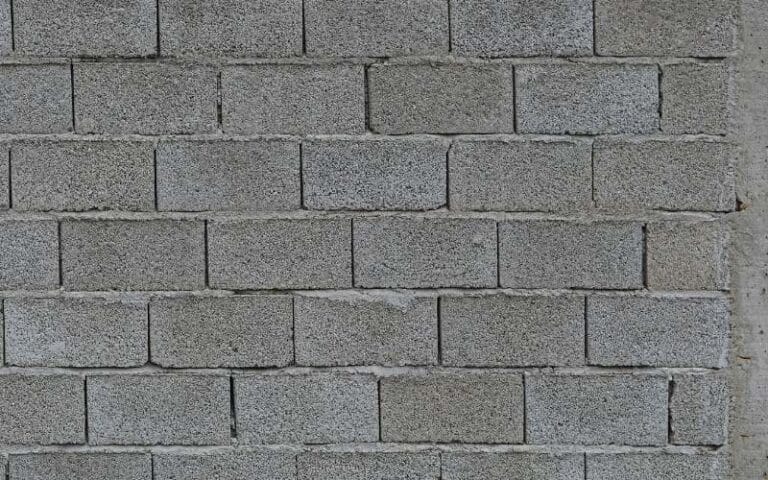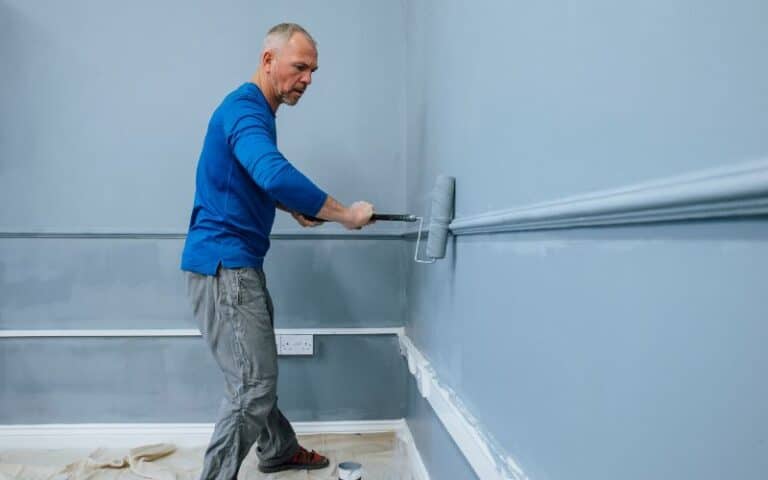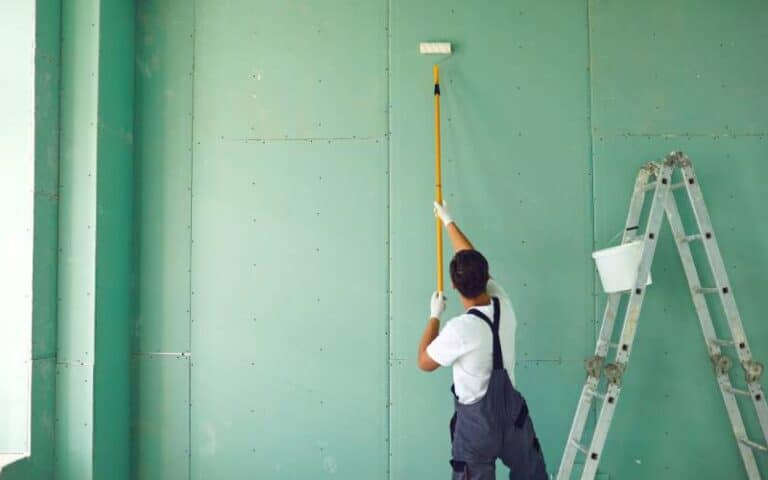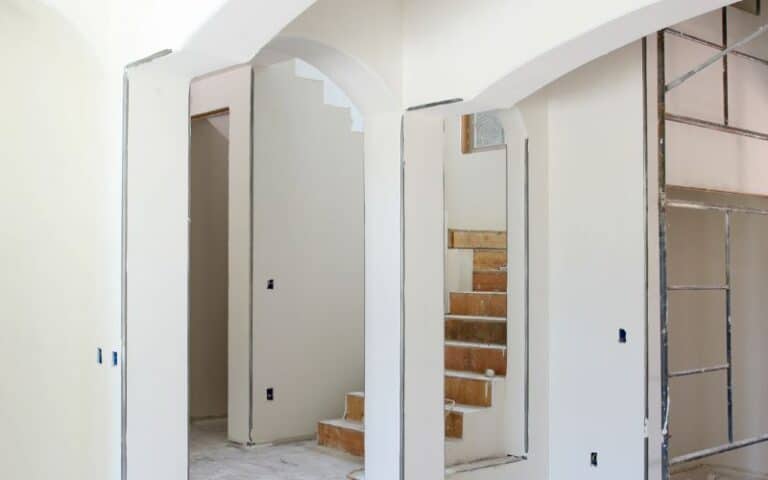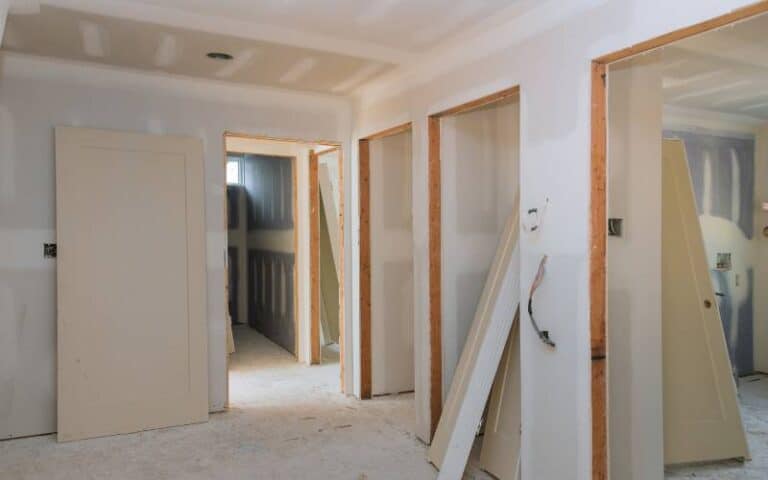Flex paste is a fantastic thick rubberized paste for repairs in the home that would’ve cost a fortune.
Many people have embraced DIY recently, and flex paste enables you to fix holes or cracks in your home.
However, while flex paste is excellent for indoor and outdoor projects, you might wonder if it could fix holes in your drywall.
This article will give you the correct answers concerning flex paste and drywall.
You can use flex paste for repairs on your drywall to avoid shouldering higher repair costs from a repairer. Flex paste can quickly cover cracks or holes in your drywall and make it water-resistant and airtight. Alternatively, the flex seal spray can repair cracks or holes in your drywall.
In this article, I will explain how flex paste can cover holes in drywall and if you can paint over flex paste.
By the end, you will know the difference between flex paste and spackle and the best way to fix holes in drywall with flex paste.
Ready for a Roofing Quiz?
Ready for a Drywall Quiz?
Can Flex Paste Be Used on Drywall?
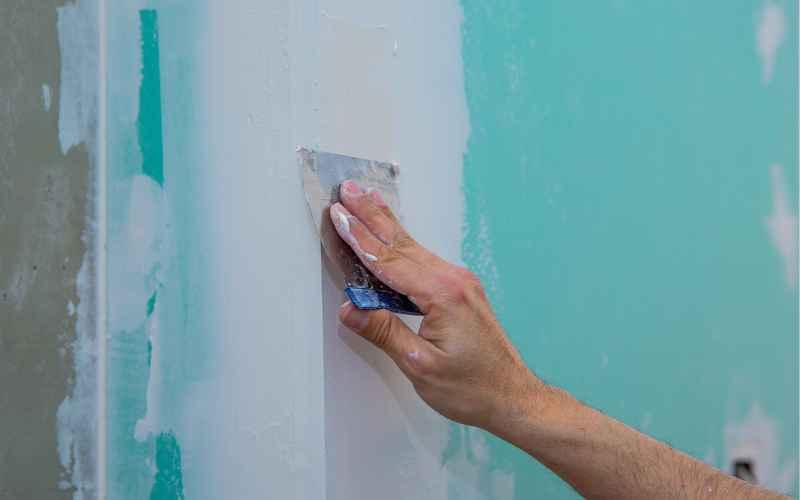
Flex paste can repair cracks and holes in your drywall; if you follow the instructions, you’ll get a satisfactory result.
Cracks and holes in drywall require patience to fix, even with repair agents like flex paste, but it’ll be good as new in the end.
When using flex paste on your drywall, it is best to focus on your safety because of the thickness and strength of the flex paste.
Interestingly, flex seal spray is a great alternative to flex paste for fixing cracks or holes in drywall.
Flex paste and flex seal spray can be used on drywall for repairs, but flex seal spray is recommended as a better-suited option for drywall.
Is Flex Paste the Same as Spackle?
Flex paste is not the same as spackle; while flex paste can be applied without sanding, spackle needs sanding to be smooth after use.
Spackle is also a powerful repair and craft product, but a few differences set it apart from flex paste.
However, some similarities make people assume that spackle and flex paste are the same product.
Below are the similarities between spackle and flex paste;
- Spackle and flex paste are repair agents that fix holes and cracks on various surfaces.
- Spackle and flex paste dry quickly after application.
- Spackle and flex paste is commonly produced in the color white.
- Spackle and flex paste can be applied using a putty knife.
Despite the similarities between spackle and flex paste that make people mistake one for the other, there are many more differences between them.
Below is a table that shows the differences between spackle and flex paste;
| Flex Paste | Spackle |
|---|---|
| Flex paste can be smoothed on surfaces without sanding. | Spackle requires sanding to be smoothed over surfaces. |
| Flex paste is sold as a ready-made paste that can be applied immediately. | Spackle is sold in powdered form and needs to be mixed into a paste before being used. |
| Flex paste is made available in white and black. | Spackle is only made available in white. |
| Flex paste remains flexible yet strong when it completely dries. | The spackle is stiff after it completely dries on a surface. |
| Flex paste can be used underwater for repairs. | Spackle can’t be used underwater for repairs. |
| Flex paste begins to dry properly after 15 minutes of application. | Spackle requires one to two hours to dry properly after application. |
What Are the Main Differences Between RedGard and Schluter?
When it comes to waterproofing solutions for tile installations, a redgard vs schluter comparison reveals key differences. RedGard is a liquid-applied membrane that provides a flexible barrier against moisture, while Schluter offers a range of waterproofing products, including membranes and shower systems. Both options have their unique features and benefits, making it essential to consider individual project requirements and preferences.
How to Use Flex Paste to Fix Holes on Drywall?
You can cover a hole in your drywall using flex paste in less than an hour instead of paying handsomely to get a repairer.
However, you may need to work fast to avoid getting stuck with dry flex paste before the hole is successfully covered.
Fixing the hole in your drywall with flex paste will require an absorbent patch for the best results.
Below are the steps for fixing your drywall with flex paste;
#1. Clean out the Hole in the Drywall
It is best to begin fixing a hole in your drywall by ensuring no paint chunks are in the way.
Therefore, you would need to clean the hole out carefully, either by picking out the pieces with your hands or scraping them.
After picking out the paint chunks, you can use a knife to clean the hole until everything is leveled carefully.
Cleaning the hole before applying the flex paste ensures that your finished work is smooth.
#2. Attach a Patch over the Hole in the Drywall
The next step is to attach a patch over the hole in your drywall because loading the hole with flex paste would be ineffective.
Place the patch over the hole in the drywall to ensure it covers the hole and expands a little past it.
You must ensure that the patch differs from the exact size of the hole in the wall. This is because a larger patch wouldn’t fall through the hole while you work.
#3. Apply the Flex Paste Around the Hole
After successfully finding a patch that fits the hole in the drywall, outline the excess part of the patch on the wall.
Next, set the patch aside and apply flex paste around the hole while adhering to the marks that fit the patch.
Unfortunately, flex paste dries quickly, so you need to work with small bits at once and work fast.
#4. Place the Patch and Apply a Coat of Flex Paste
Immediately you successfully spread flex paste around the marked areas where the patch should sit and attach the patch to the drywall.
Then, spread a coat of flex paste on the patch until it’s set. This first coat of flex paste ensures that the patch securely covers the drywall’s hole.
#5. Apply More Coats of Flex Paste to Cover the Patch
The last step requires you to cover the patch with flex paste so that the hole in your drywall is invisible.
To cover the patch, you must apply more coats of flex paste around and over it in circular motions.
Next, allow the flex paste to dry completely before painting the wall to your taste; the hole in your wall will be unnoticeable after this process.
Can You Paint over Flex Paste?
You can paint over flex paste and enjoy flawless results, but you must wait until it is fully cured before applying it.
However, flex paste takes 24 to 48 hours to cure fully, which may seem like a drag for some people.
The curing time frame varies depending on the thickness of the layers and the weather condition but flex paste cures faster in humid environments.
Unfortunately, if the 24 to 48-hour window closes and the flex paste still appears wet, you’re advised against painting.
No matter how much of a hurry you’re in, painting over wet flex paint could ruin the entire drywall or surface.
A few types of paints are the best to paint over flex paste because they are waterproof.
These paints include; urethane, acrylic latex, and Zinsser; if you pair these with a primer, you’ll have a fantastic finish.
It’s great that you can paint over flex paste yourself, just as you can use flex paste to fix holes in no time.
Below are the steps for painting over a cured coat of flex paste;
- First, wipe the flex paste clean to remove dirt or debris.
- Next, apply a few coats of primer to enhance paint adhesion.
- Lastly, apply the paint to the surface following the manufacturer’s instructions.

